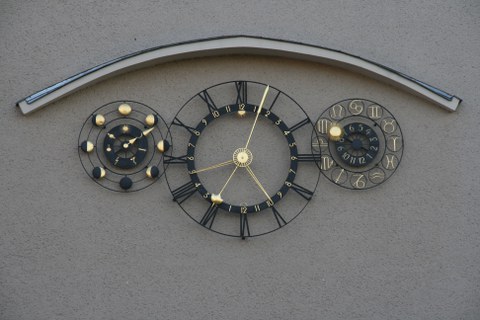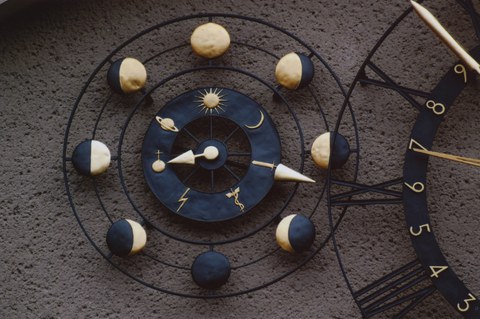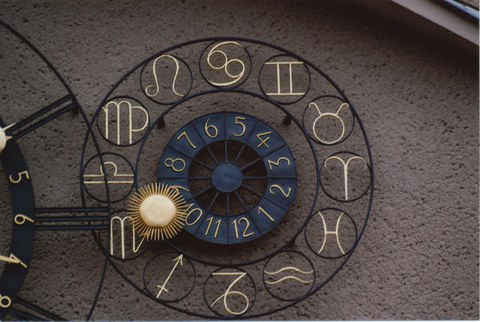TIME SIGNAL AND TIME SYNCHRONIZATION
Table of contents
Time-Service (NTP and clock network)
- exact time signal (DCF77)
- time synchronization through the data network/ telecommunication network
- time synchronization for DV-devices, secondary clocks
- installation and operationg of secondary clocks in TU buildings
- operation of tower clocks
Options
- for DV end devices the time server in the operating system is to be adjusted
time.zih.tu-dresden.de (NTP/UDP-Port 123) - central clock network for secondary clocks in foyers, lecture halls, and towers
- all students, employees and guests of the TUD
- can be used without application
- new installation of secondary clocks only within the framework of building work
- Network compatible end-device which supports NTP / UDP-Port 123
- Do NOT try to set secondary clocks on campus yourself
free
Provisioning Time
available immediately
Support Times
The opening hours of the Service Desk apply.
Operating Times / Status
around the clock
Service in operations?
Please report problems to the service desk:
 © ZIH
© ZIH
Visiting address:
Andreas-Pfitzmann-Bau, Room E036 Nöthnitzer Straße 46
01187 Dresden
https://navigator.tu-dresden.de/etplan/apb/00/raum/542100.2480?language=en
Postal address:
TUD Dresden University of Technology
Support Center Digitalisierung
Service Desk
01062 Dresden
Office hours:
- Monday:
- 09:00 - 12:30
- 14:00 - 17:00
- Tuesday:
- 09:00 - 12:30
- 14:00 - 17:00
- Wednesday:
- 09:00 - 12:30
- 14:00 - 17:00
- Thursday:
- 09:00 - 12:30
- 14:00 - 17:00
- Friday:
- 09:00 - 11:30
- 14:00 - 16:00
Office hours by phone:
- Monday:
- 08:00 - 12:30
- 14:00 - 18:00
- Tuesday:
- 08:00 - 12:30
- 14:00 - 18:00
- Wednesday:
- 08:00 - 12:30
- 14:00 - 18:00
- Thursday:
- 08:00 - 12:30
- 14:00 - 18:00
- Friday:
- 08:00 - 11:30
- 14:00 - 17:00
Set Time Service
Devices that support more than one entry
Here we recommend the following server entries for redundancy reasons:
- ntp1.zih.tu-dresden.de
- ntp2.zih.tu-dresden.de
Devices that allow only one entry
- time.zih.tu-dresden.de
Explanation of the astronomical clock at the Willers-Bau
The Astronomical Art Clock was built around 1955 according to a design by the architect of the Trefftz building, Walther Henn, under the direction of Professor Willers by master clockmaker Felix Lange from Dresden and the tower clock construction company Zacharias from Leipzig. Until the end of 2013, it was still being maintained by the Dresden clockmaker's workshop Lange (in 2014, the maintenance company for all tower clocks at TU Dresden changed). The original location of the Astronomical Art Clock was the northern gable wall of the Trefftz Building. With the construction of the high-performance computer storage complex (HRSK) in 2006 as an extension to the previous gable, the art clock disappeared invisibly to passers-by in the foyer of the HRSK. Therefore, after securing and restoring it, a new location was found by attaching it to the gable of the Willers building in order to continue to make this technical masterpiece accessible to the public.
The clock consists of three wrought-iron rings. The left-hand dial indicates the eight phases of the moon (waning/ waxing) on the outside and the seven days of the week on the inside. The centre and largest dial shows not only the time but also sunrise (right) and sunset (left). The right-hand dial in turn indicates the twelve signs of the zodiac with the corresponding months.
Setting incorrectly functioning secondary clocks
Do not attempt to correct the clocks! The causes of malfunctions in the network clocks are often construction underway (conduction abnormalities), or dirt. An arbitrary "correction" worsens the situation due to the structure of the network clocks or destroys the electro mechanical movement. Therefore please consult the service desk via email (servicedesk@tu-dresden.de) if a clock is not working correctly. We will take care of it as soon as possible.
The TU Dresden is also not responsible for battery-powered (radio) clocks. If you want to install such a clock you are also responsible for faults, battery replacement and conversion during summer / winter time.



